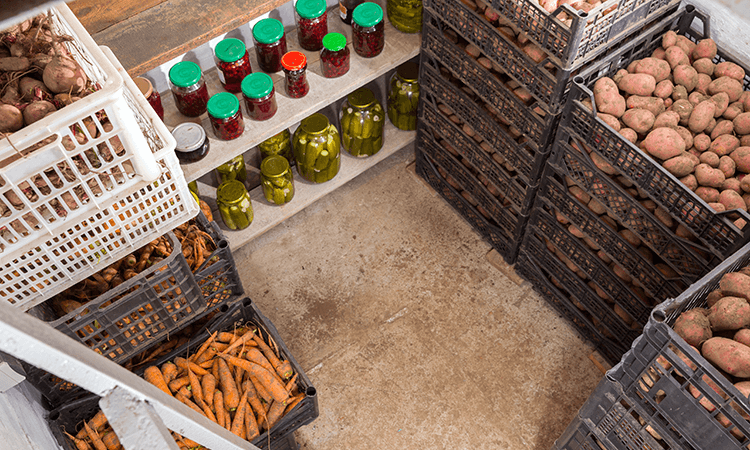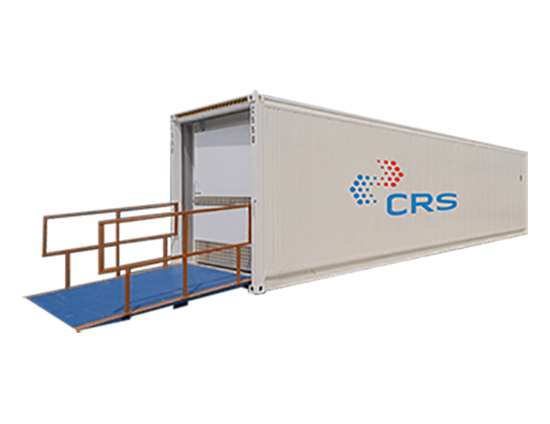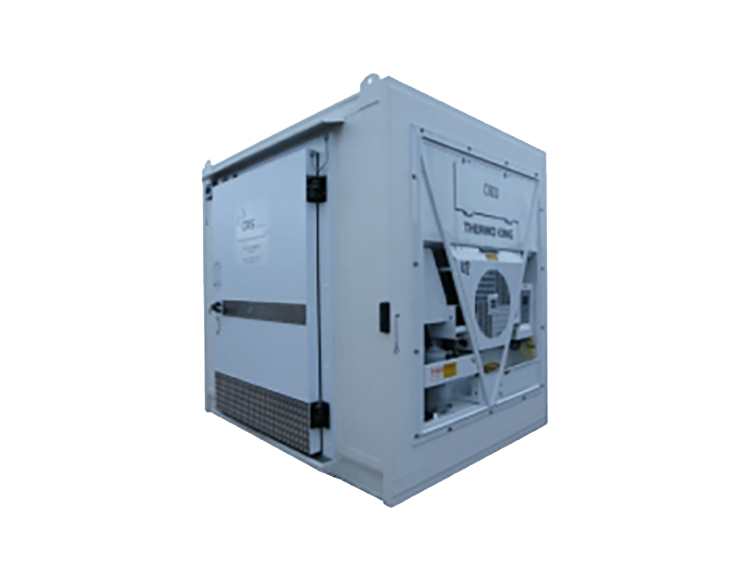Cold Storage for Fruit and Vegetable
Cold storage for fruit and veg is a particularly tricky subject as there are many factors, such as age and origin, which can affect how fresh produce should be stored. This guide looks at why you should be using cold storage to stock and distribute your fresh produce and the most important factors to consider when using cold storage for fruit and veg.
The benefits of using commercial refrigeration to store fruits and vegetables
Without cold storage, most fruits and vegetables will not stay fresh for more than a few days. As soon as fresh produce is harvested, it begins to deteriorate and dangerous bacteria will start to develop.

The low temperatures inside cold storage units halt the growth of these pathogenic fungi, ensuring that spoilage of fruits and vegetables is kept to a minimum. Refrigeration and blast freezing are equally popular options for many vegetables and some selected fruits. This is why our cold storage units have a varied temperature range for both freezing and chilling options.
Another ingenious benefit of cold storage units is that they are highly customisable, something that is particularly important when storing fresh fruits and vegetables. Temperature and humidity levels can vary greatly between produce, making customisation essential. Cold storage for fruit and veg also comes in a variety of sizes, including mini chillers that are perfect for caterers and mega cold stores made with large distributors in mind.
Whether you’re looking to extend your commercial refrigeration or are considering branching out into the fruit and veg market, a portable cold storage solution will extend the life of your fruits and vegetables both in storage and in transit.
Optimum storage temperatures for common fruits and vegetables
There is rarely a one temperature fits all solution to storing fruit and veg. This is because factors such as crop maturity, the season of harvest and crop origins all play a part in calculating the optimum temperature requirements.
A general ‘rule of thumb’ is that cool season fruit and veg, such as kale and sprouts, should be stored at around 0-2°C. Warmer season fruit and veg, such a cucumber and tomato, is best stored around 7-10°C. However, there are exceptions to the rule, as some fruit and veg is more greatly affected by low temperatures.
This table is a guideline for storing some of the most common/popular types of fruit and veg.
|
Produce Type |
Optimum Temperature °C |
Optimum humidity % |
Storage life |
|
Apples |
1-4 |
90-95 |
Up to 12 months |
|
Bananas |
13-16 |
80-95 |
Up to 3 weeks |
|
Berries (incl. Strawberries) |
0 |
90-95 |
Blackberries and raspberries up to 3 days, strawberries and cherries up to 7 days |
|
Grapes |
0 |
85 |
Up to 8 weeks |
|
Nectarines, plums and peaches |
0 |
90-95 |
Up to 5 weeks |
|
Pears |
-1-0 |
90–95 |
Up to 7 months |
|
Broccoli and cauliflower |
0 |
95-100 |
Up to 4 weeks |
|
Carrots, mature and immature |
0 |
98-100 |
Mature, up to 9 months and immature up to 6 weeks |
|
Onion, white and red |
0 |
65–70 |
Up to 8 months |
|
Lettuce |
0 |
98–100 |
Up to 3 weeks |
All cold store refrigeration units will provide you with a temperature range between -40°C to +10°C, making them perfect for the storage of fruits and vegetables.
What types of cold storage are suitable for fruit and vegetables?
Most cold storage is incredibly versatile, meaning that there are plenty of options when it comes to storing and distributing fruit and veg.

Refrigerated containers
CRS refrigerated containers come in a variety of sizes from 10ft to 45ft and have a temperature range of -40°C to +10°C. Most cold store units are portable and can be used to safely transport goods. Mega cold stores are also a popular option for larger companies and work by combining multiple linked cold store units for a mega refrigerated solution.

Blast freezers and chillers
For businesses looking to stock and distribute frozen fruit and veg, rapid freezing blast chillers are a great option. With temperatures as low as -40°C, you can freeze a variety of fruits and vegetables. Mini blast freezers are also available for caterers or smaller businesses short on space.
Cold rooms
Grade A specification cold rooms are ideal for use as both hygienic food processing areas and for fresh produce storage. Cold rooms are a great solution for any business looking for custom cold storage for their fruit or veg.
Best practices for storing fruit and vegetables
As you can see, the storage of fruits and vegetables can be a complicated task, which is why adhering to cold storage best practices is essential for the longevity and quality of your fruit and veg.
What are the best practices for fruit and vegetable storage?
Fruit and veg should always be stored separately
Most fruits produce a hormone called ethylene once they begin to ripen and this changes texture, colour and flavour in produce. Unfortunately, fruits producing ethylene also affect all surrounding produce, speeding up the ripening process considerably. If fruits are stored alongside vegetables, you risk speeding up the ageing process of produce, resulting in food wastage.
Adhere to good storage practices
Avoid overstocking your cold storage unit above its capacity, as this raises the internal temperature and speeds up produce deterioration. Tightly packed pallets should also be avoided as crushing can occur, leading to the development of bacterial growth. Pack your fruit and veg so that there is enough room for the internal fan to distribute cool air freely.
Know the history of your produce
Distributors should know the history of fruit and veg to make the best decision regarding cold storage and transportation arrangements. This includes factors such as product maturity, prior goods preparation, previous quality inspections and produce grading.
Whilst cold storage can increase the longevity of your fruits and vegetables, your produce still needs some TLC to keep it at its best. Look after your fruit and veg and you’ll extend its lifespan considerably.
By crscoldstorage.co.uk













